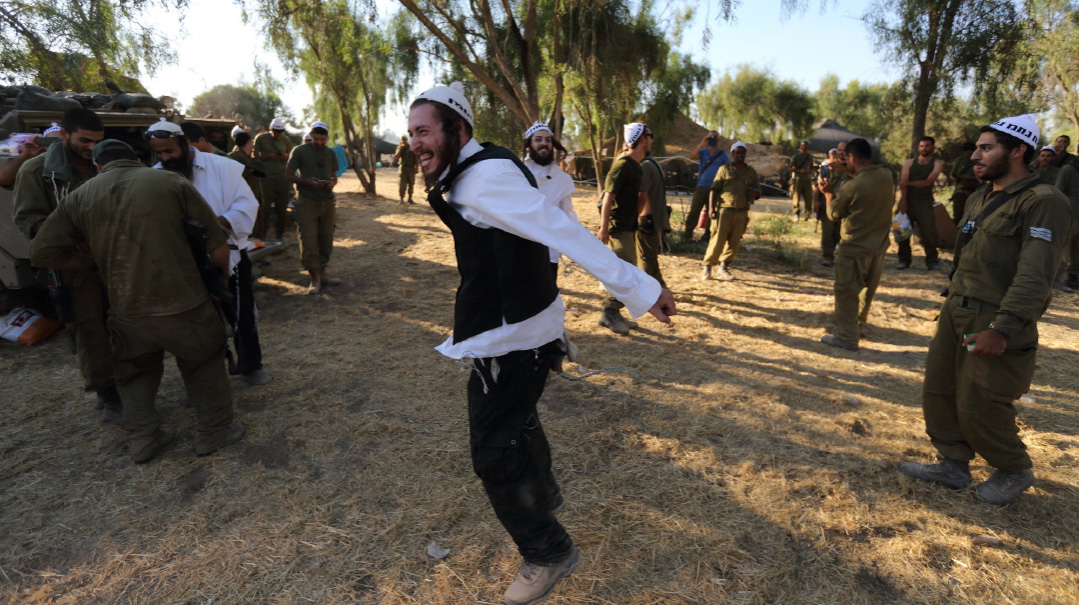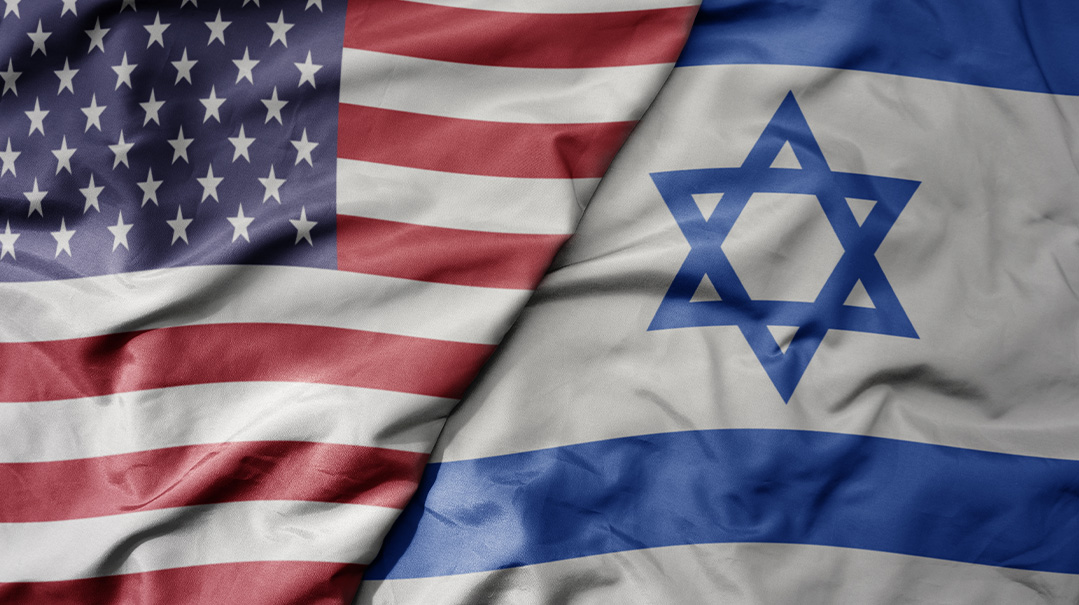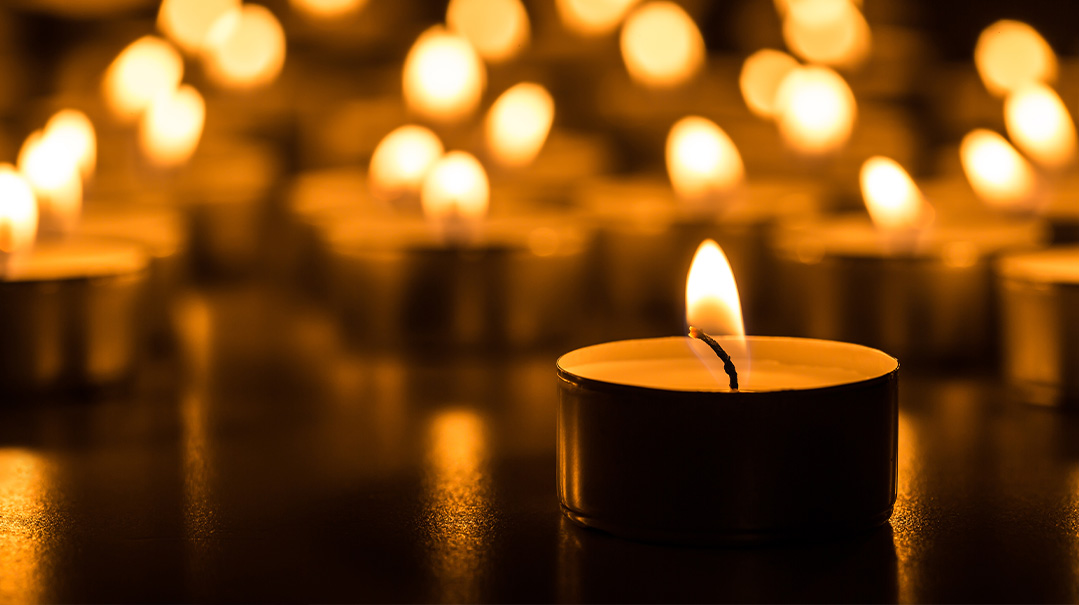Harmony through Opposites

The contrast between Rav Aaron Lopiansky’s parents could not have been greater
S
havuos brought me back to Seed of Redemption, Rav Aaron Lopiansky’s superb adaptation of Nachlas Rus by Rav Yoseph Lipowitz, and with it to Rav Lopiansky’s poignant tribute to his mother, who passed away on the second day of Shavuos 5766 and to whom the sefer is dedicated.
I have long thought that Rav Lopiansky’s appreciation of his father, Rabbi Bentzion Lopiansky, which appears in his collection Time Pieces, is the most powerful hesped of a father by a son that I have ever read. The lessons Reb Bentzion taught his son about how to put oneself in the shoes of another are literally unforgettable.
Reb Bentzion once saw Aaron, then nine or ten years old, tagging along after a group of boys in the Bialystoker Shul on the Lower East Side, where he served as the shamash. The boys were teasing a homeless vagrant who slept in the shul’s furnace room, until he chased after them. Reb Bentzion called his son over, and spoke calmly and warmly as always.
“You see that man?” he asked. “He was born a cute little baby whose mother stroked him and nursed him. She cooed to him and delighted when he cooed back and smiled at her. His father fantasized about his infant son achieving all those things he had failed to attain.
“Now look at what has become of him. Is it not a tragedy? Should we not be moved to tears? And you are compounding that tragedy by taking a tzelem Elokim and treating him like dirt.”
Aaron’s tears flowed freely with both compassion for the vagrant and shame at his cruelty, as his father finished speaking even more softly than he had begun.
Anyone who knows Rav Aaron will instantly recognize how much he is the extension of his father and a product of the lessons he learned from him. No wonder that his greatest pleasure as a boy was getting bundled up on a cold winter night for an hourlong walk with his father, who gave him his undivided attention and had so many things to speak about.
The contrast between Rav Lopiansky’s parents could not have been greater. His father was “a Litvak: calm, collected, thoughtful, articulate” — a product of Slabodka Yeshivah in every respect. His mother was Polish — fierce, passionate, cynical, denied all but a rudimentary education by the poverty of her youth. She had never heard of the yeshivah world; the impoverished world in which she grew up was in widespread rebellion against the old ways.
Yet, writes Rav Lopiansky, “I shake my head in disbelief at how harmonious and mutually nourishing that relationship between seemingly mismatched individuals was.... She saw in my father truth, thoughtfulness, genuine spirituality, and a window into a world of beauty. My father saw in her passion, sacrifice beyond comprehension, and a razor-sharp understanding of the people with whom she came into contact.”
Even before the Holocaust and the long years in a work camp, Esther Raizel Berliner had been hardened by life. The oldest of four, she watched her mother die of tuberculosis at seven, and was left as the primary caregiver to her younger siblings. When her father remarried, the combined family numbered 14 children. In an area of Poland in which poverty was endemic, “they were the poorest family I knew,” a cousin remembered. That poverty forced Esther Raizel to leave school at an early age, despite her high grades.
But what she did possess was fierce determination — the same determination that would later keep her at her sewing machine in a sweltering sweatshop all summer long so her two sons could spend the summer at the finest camp in the Catskills. In the Gross-Rosen work camp, she shared whatever extra morsels of food her SS employer gave her with other prisoners. And in America, after the war, she purchased medicine from her meager paycheck for the child of a friend in Israel, where the medicine could not be obtained.
Her natural street smarts, honed to razor sharpness by years of struggling for survival, allowed her to look past pretense and see people for what they were. Yet — and this is the great insight of Rabbi Lopiansky’s remembrance — despite her lack of exposure to the refinement that Rav Yerucham Levovitz identified as the defining characteristic of a ben Torah, she was acutely sensitive to spiritual elevation in others and drawn toward it.
In the Feldafing DP camp after the war, she noticed a small group of former yeshivah people, and was attracted to their culture, refinement and sincerity. She told the astonished camp shadchan that she sought a shidduch with one of those people, and mentioned Reb Aaron’s father, 15 years her senior.
She was, according to her son, a handsome woman, and after arriving in America, she had many shidduch offers, but always insisted coyly that she was waiting for her “yeshivah bochur.” How shocked her brothers were when her nearly 50-year-old “bochur” finally arrived.
Later, she became friends in a bungalow colony with two sisters, each married to one of the greats of the prewar Mirrer Yeshivah, Rebbetzins Kreiser and Brudny. It did not take her long to note that “whenever I start speaking about someone, [Rebbetzin Kreiser] immediately changes the subject and tells me that she has something very important to tell me.” Thus did she learn the prohibitions against lashon hara.
Rebbetzin Kreiser’s absolute devotion to her husband’s learning, at the expense of anything for herself, Mrs. Lopiansky told her son, was something “that you cannot fake.”
Her garment district employer produced high-end women’s coats, and as a bonus allowed each employee to make one such coat a year. Mrs. Lopiansky made one for herself the first year, but every year after that she gave her bonus to one of the rebbetzins she so admired.
Some time after Reb Aaron left for Eretz Yisrael at age 17, his great teacher, Rav Nochum Partzovitz, visited America for medical treatments. The Lopianskys went to visit him. Mrs. Lopiansky had never met anyone like him, someone who radiated wisdom and humility, and whatever misgivings she had about the course Reb Aaron had chosen and his distance from her were dispelled. That made it easier when Reb Aaron became engaged to the daughter of the Mirrer Rosh Yeshivah, Rav Beinish Finkel, for her to accept that she would see her children and grandchildren only rarely.
Despite the more complex literary structure of Rav Lopiansky’s tribute to his father — beginning with a question posed to his father on Iyov when he was eight and ending with the answer on his father’s deathbed — my guess is that it came easier to Reb Aaron than the tribute to his mother. The former was a description of a father as role model. Coming to appreciate his mother’s different form of greatness of the soul was a hard-won victory.
Yet Rav Lopiansky need not have shaken his head over his parents’ harmonious and devoted marriage. Over the years, one of Rav Aaron’s most profound lessons for me in understanding the world is that Hashem works through pairs of opposites — Avraham Avinu and Yitzchak Avinu — to bring about the ultimate harmony, Yaakov Avinu.
But the prior dichotomy is necessary to the Divine process: It cannot start with Yaakov Avinu. And so it was that his parents’ very different natures produced harmony.
Chaver Tov
I last saw Richard Stone a”h over dinner in early March. We followed his prescribed formula: I picked the restaurant; he paid. And as always, the conversation flowed, albeit in many directions.
Richard was in the process of buying a large new apartment, and was very excited about the prospect of a Jerusalem residence in which to host children and grandchildren. Though he had already had one minor stroke, his mother had lived to past 100 with her full faculties, and Richard needed at least that much time to fulfill all his plans.
From the apartment, we were soon on to a paper that Richard had written for Professor Isadore Twersky at Harvard nearly 60 years ago, on the rent rolls of pre-expulsion English Jewry. One had to be on one’s toes to keep up with Richard.
After that dinner, I sent Richard an email in which I told him that of all his qualities, the one that stood out the most in my mind was his capacity for friendship. He was constantly making new friends without shedding old ones, all the way back to his youth in New Orleans. The family of a non-Jewish classmate from Harvard Law School pushed back their father’s funeral a day when they realized that Richard would not be able to attend because of Shabbos. And when Richard spoke of those in his wide circle, it was almost always with admiration — something very rare for a person of his immense talents. Rav Zevulun Schwartzman described Richard at the levayah in Israel as embodying what Chazal meant by a chaver tov.
Richard liked my compliment. (I learned this week from a much longer-standing member of Richard’s circle that at his son Mikey’s bris, he had wished his son “the brains of his mother and his father’s ability to gather a large circle of deep friendships.”) But he wondered whether he had perhaps spent too much of his life fostering those friendships at the expense of not achieving as much as he should have.
That concern is remarkable given what he did achieve both in the secular realm and as a Jewish leader. He joined the Solicitor General’s office soon after graduating law school, where he would argue eight or nine cases before the Supreme Court. From there he went on to teach at Columbia Law School for four decades. At the same time, he pursued a career as a successful venture capitalist, with a heavy emphasis on Israeli startups.
Richard served as an officer of the OU for more than a decade, and as head of its Institute for Public Affairs, in which capacity he played a major role the opening of the OU’s Washington office. He was president of the National Conference Serving Eurasian Jewry (NCSEJ), and eventually chairman of the Conference of Presidents of Major Jewish Organizations, during which term he worked hand-in-hand with Malcolm Hoenlein, the executive director of the Conference. The two men continued that partnership even after Richard’s term as chairman had ended.
But perhaps no title did he wear more proudly or for longer than that of president of Novardok Yeshivah, headed by his close friend Rav Mordechai Joffen.
Richard was an enthusiast of the first degree. Whenever I heard of a project that excited me, he was almost invariably the first person I called. (He knew more people of means than I do.) That is how he came to be the first chairman of the Haredi Institute for Public Affairs, founded by Mishpacha publisher Eli Paley.
Richard’s religious journey was a fascinating one — and one he delighted in telling. When he was accepted to Harvard, he told his European-born grandmother, who lived in Bogalusa, Louisiana, only that he was going to school in Boston, assuming that she had never heard of Harvard. But it turned out that she had a cousin who was one of Harvard’s most learned and famous professors, the Slabodka-trained medievalist Harry Austryn Wolfson.
Wolfson, in turn, introduced him to Professor Isadore Twersky, with whom Richard soon became enamored. (Professor Twersky was also the Tolna Rebbe of Boston.) By the time he graduated Harvard in three years in 1963, Richard’s only goal was to come to Israel to study in yeshivah. It would be the first of a number of such breaks in his career.
Richard was formidably articulate as both a speaker and writer. Yet his greatest work may be yet to come. He spoke often of working on his memoirs, and should those be close to completion, they would constitute a masterpiece, for Richard was a raconteur nonpareil. Not only would those memoirs provide portraits of hundreds of fascinating personalities, but also a keen observer’s view of many historical events at which he had a ringside seat.
Let us hope. Meanwhile, my wife and I, like the more that 1,000 mourners who overflowed the West Side Institutional Synagogue to pay their final respects, are left with many good memories and a hole in our lives impossible to fill.
(Originally featured in Mishpacha, Issue 914. Yonoson Rosenblum may be contacted directly at rosenblum@mishpacha.com)
Oops! We could not locate your form.







